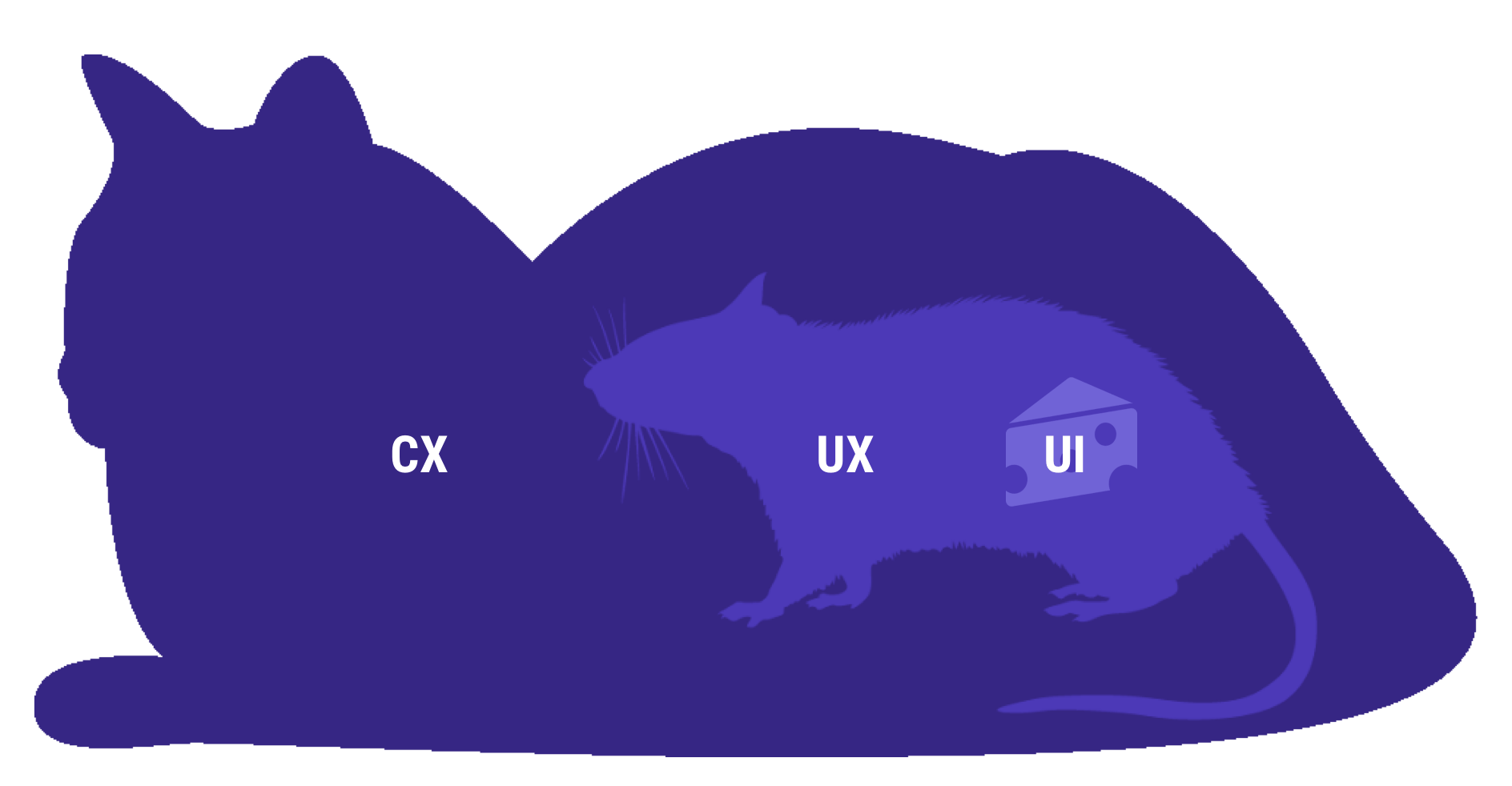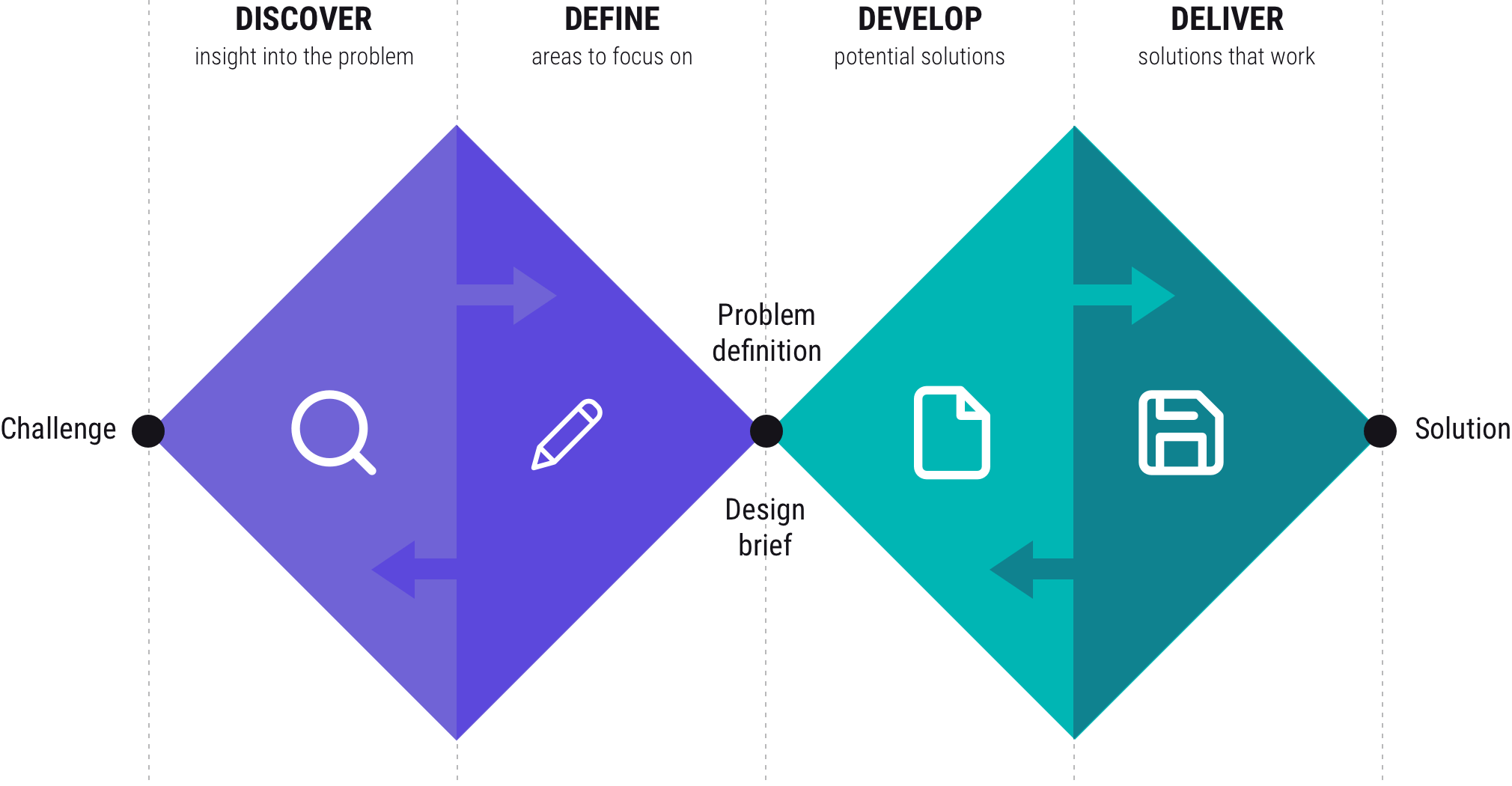SERVICES
What is Customer Experience?
Customer experience (CX) relates to how customers perceive a brand based on their exposure to it. These points of exposure are known as touchpoints and encompass all areas of a business that customers interact with. This could be an interaction with a product or service, a post on social media, conversing with an in-app chatbot, speaking with customer support, and any communication post-sale.
User Experience (UX) is a part of CX and focuses on the overall journey of user interactions.
How to know the difference
CX is focused on the 'relationship level' of the customer experience, whereas UX is focused on the interaction and journey within that relationship level.
Think about your own relationship with a company over your lifetime. You might be able to define your experience with a bank, for example, across the following levels taken from the Nielsen Norman Group website:
The single-interaction level
The experience a person has across a single device in trying to perform a specific task, such as checking their bank balance
The journey level
The person’s experience of attempting to achieve a goal, sometimes across multiple platforms, channels, or devices, such as paying bills, and making changes to a monthly bill payment
The relationship level
All interactions the person has had with the company, over their lifetime, such as calls to customer service, any written correspondence, and face-to-face meetings
The benefits
Improving your CX is a smart move, and leads to an increase in revenue, a boost in customer loyalty, stronger brand value, a better understanding of your customers and a clearer perspective of their needs and what they value the most. Costs will be reduced, and you’ll find that you’re investing in the right things at the right time with confidence.
Customer-centric all the way
A customer-centric approach not only mitigates the risk for your business. It also prevents many of the common mistakes that we see time and time again across many businesses. MVP's often get released based on stakeholder assumptions, and without having conducted research, which leads to much bigger problems later on. CX prevents these mistakes by focusing on solutions for customer pain points that really exist.
Your most unhappy customers are
your greatest source of learning.
Bill Gates
Research
Listening to your customers is an essential step. If you don’t quite know where to start with your research, don’t worry. That’s exactly what CX researchers are for. Researchers ask the right questions to the right people. They investigate competitors and the current landscape. They translate complex research documentation into more accessible bite-size chunks that the whole team can access. This data becomes a crucial source of input for teams to reference back to throughout the design process. And the research doesn’t stop there. It’s a continuous cycle as we define, ideate, and test products, services, and experiences. Research acts as the foundation on which all other steps are based.
Design
Designers traditionally work closely with researchers to translate and define their findings into something more tangible, recognising common patterns, defining customer problems and needs, and prioritising tasks. As a designer myself, I focus on customer-centric problem-solving and follow the double diamond model alongside a standard design process. Some individual tasks listed beneath each step on the above graphic might be skipped based on client requirements, budget, project duration, individual business needs, etc.
Jack-of-all-trades vs specialist
You'll often see both research and design combined as one role. While I enjoy working across both for short-term projects, I prefer to work alongside at least one researcher as part of a wider CX team. This can't always be the reality. But it's when CX is at its most optimal.
The power of teams!
Let’s imagine you’re setting up a business and have an idea for a tool to help vets. You’re incredibly short on time as you want to ship this to the market ahead of competitors. Where do you start? Well, you might want to invest in two CX Researchers (twice the speed), a Product Lead (strategy, timelines, alignment, collaboration, shared language), 2 CX Designers (one tool-focused, another website-focused), and a Visual Designer (branding, tool, website look and feel). You’re immediately mitigating any risk by investing in research. You’re saving time by hiring specialists to work together simultaneously. You're ensuring a common language across the board with a Product Lead, who can also act as the barrier between tech and design. By the time you go to market with your new tool, you’re confident because it’s been tried and tested.
Visual design
Visual designers perform a balancing act between aesthetics and usability. Their role is key to all mediums of customer communication. There are so many elements to consider - colour, space, typography, iconography, layout, illustration, photography, and patterns. To achieve this balance, there's a variety of principles that must be followed - hierarchy, balance, similarity and contrast, scale and proportion, emphasis and unity. And like all other areas of CX, a customer-centric approach - or what we like to call Universal Design - is essential.
People ignore design that ignores people.
Frank Chimero, Designer
Universal design and accessibility
According to a WHO report in 2011, around 15% of the world's population has a disability. This includes visual (e.g., colour blindness), mobility (e.g., a wheelchair user), auditory (hearing issues), seizures (e.g., epilepsy), and learning (e.g., dyslexia). Making your products, services, and experiences accessible to all is crucial to any business. This is also known as universal design.
Sadly, not all universal design is universal. This often leads to products that cause frustration and difficulties for many users, or make it impossible for them to reach their end goal. Whether it's with simple and intuitive interfaces, high contrasting adjustable text sizes, or well-scaled touch areas, we should design with everyone in mind.
Looking for a CX designer or consultant?
If you're interested in discussing an upcoming project, or simply have some questions about CX and UX, I would love to talk to you. I’ll pop the kettle on. You can bring the cake. Drop me a quick message, and I'll get back to you.





